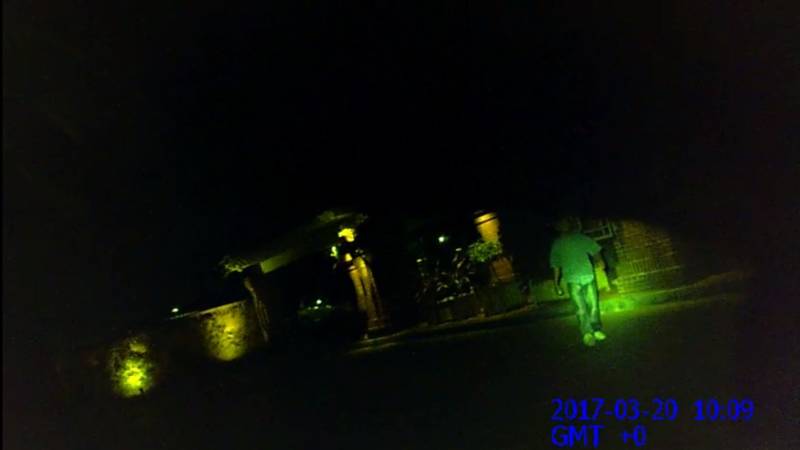San Mateo County District Attorney Steve Wagstaffe said in an interview Saturday that if the officers had chosen to shoot Posada, it could very well have been legally justified under California law. He said he knows Tasers were involved in three deaths in the county last year, but in this case the devices may have saved a life.
“If these officers did not have that intermediary force of a Taser or some other device available for them, no question in these circumstances they would have gone to the firearm and Mr. Posada would have lost his life,” Wagstaffe said. “Instead, Mr. Posada has his life.”
Attempted Murder Charge
A witness appearing to be Posada’s brother but whose identity was redacted in the records told another officer that Posada was diagnosed with schizophrenia and had recently been refusing to take medication.
The witness said that Posada would stand guard outside his bedroom door “believing someone is out to hurt him,” according to a police report. The symptoms had worsened the morning of March 20, 2017, and the witness said family members had planned to seek medical help for Posada after their work shifts ended.
In an interview recorded on body camera later that morning, Posada told a deputy translating for Fliege that he heard voices that told him people were coming to kill his brother, who also worked at the hotel and was talking with police when they first arrived.
“So, he saw that we were talking with his brother and he thought we were going to harm his brother?” Fliege asked. “So he decided he was going to protect his brother, and did he want to kill us?”
“Yes,” Posada answered in Spanish.
“You wanted to kill us? All three of us?” Fliege asked Posada.
“Yes, everyone,” Posada said in Spanish.
He was charged with attempted murder and three felony counts of assaulting a peace officer.
Posada’s defense attorney initially argued he wasn’t competent to stand trial, according to court records. Two doctors who examined him disagreed, and a third judged him able to face charges.
His defense attorneys did not respond to a request for comment.
Wagstaffe said Posada’s illness weighed heavily on the case and ultimately led to dropping the attempted murder charge.
“He believed these officers were the ones that the voices had warned him were there to kill his brother,” Wagstaffe said. “And so in his state of mind, he was acting in a sense in the defense of a third person.”
He said a jury may have found that Posada didn’t understand the consequences of his actions.
The case was ultimately settled with a plea deal. Posada pleaded no contest to three felony assault charges. He was sentenced to seven years, eight months in prison. He’s currently at the Substance Abuse Treatment Facility at Corcoran State Prison and will be eligible for parole in March 2020, according to state prison records.
That Menlo Park officers were able to avoid a fatal shooting was “the best possible outcome,” said John Snook, executive director of the national Treatment Advocacy Center. But he added that a lengthy prison sentence wouldn’t likely help Posada.
“The absolute worst way to provide mental illness care is in a jail cell,” Snook said. “Barring a miracle that I have almost never seen, there is almost no chance that things are not going to be much worse upon his release.”
Sukey Lewis of KQED News and Thomas Peele of the Bay Area News Group contributed to this report.
This story was produced as part of the California Reporting Project, a collaboration of more than 30 newsrooms across the state to obtain and report on police misconduct and serious use-of-force records unsealed in 2019.

